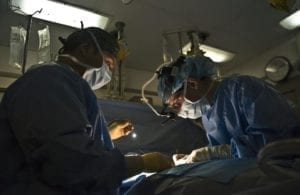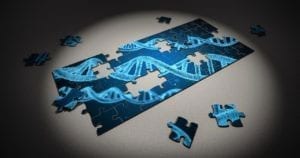Hirschsprung’s Disease
What is Hirschsprung’s disease?
Hirschsprung’s disease is a rare congenital condition that affects the colons of newborn children, marked by weakness in the large intestine. This weakness causes children to lose their ability of moving stool through the intestine (peristalsis), which in turn causes a blockage of stool in the intestines.
This disorder is more common in boys than girls, and is also more likely to occur in children previously diagnosed with Down syndrome and other inherited conditions.
What causes Hirschsprung’s disease?
The exact cause of Hirschsprung’s disease is not known, but the condition develops when the nerve cells around the colon (ganglion cells) do not fully form. This underdevelopment can affect a very long portion of the colon, or a very small part of it. Either way, this prevents digested food and stool from being adequately pushed through those areas, creating a blockage of stool that in turn prevents regular bowel movements.
What are the symptoms of Hirschsprung’s disease?
Symptoms of Hirschsprung’s disease usually appear during the first six weeks after birth, and typically within 48 hours after birth. These symptoms include:
- Not having a bowel movement within 48 hours after birth
- Green or brown vomit
- Abdominal swelling
- Gas or diarrhea, which may be bloody
- Infrequent and explosive stools
In toddlers and older children with Hirschsprung’s disease, common symptoms can include the following:
- Dependence on laxatives
- Abdominal swelling
- Delayed increase in height or weight
- Anemia (low energy levels due to a shortage of red blood cells)
- Feeling gassy
How is Hirschsprung’s disease diagnosed?
Hirschsprung’s disease can be diagnosed after a thorough clinical evaluation and conducting a detailed patient and family history. In addition to these, a healthcare provider with use oe or more of the following tests to confirm a diagnosis:
- Abdominal X-ray to show a widened area of the colon that results from the buildup of stool
- Manometry test, which inflates a balloon in the rectum to see if these muscles respond normally by relaxing
- X-ray with contrast dye to show a silhouette of the rectum
- Colon biopsy
What are the available treatments for Hirschsprung’s disease?
Fortunately, Hirschsprung’s disease is treated successfully with surgery that can occur in two separate procedures. First, a surgeon will remove the part of the colon with the defective nerve cells and reattach the healthy rectum to the healthy part of the colon. Then, in a separate surgical procedure, a surgeon will perform a colostomy, if the case of Hirschsprung’s disease is severe. A colostomy involves making a tiny hole in the abdomen and attaching the upper part of the colon to it. This tiny hole will then be attached to a collection bag for stool.
After surgery, it is important for children to drink plenty of water and eat foods that are high in fiber. Laxatives can also be taken under the discretion of a doctor.
Where can I find more information on Hirschsprung’s disease?
Hirschsprung’s Disease Articles

Only Surgery can Help a Little Boy with Hirschsprung’s Disease

Researchers Uncover a Diverse Array of Risk Variants for Hirschsprung’s Disease
-300x201.jpg)
New England Journal of Medicine (NEJM) Announces Results of A Unique Study of Hirschsprung Disease Affecting Infants





